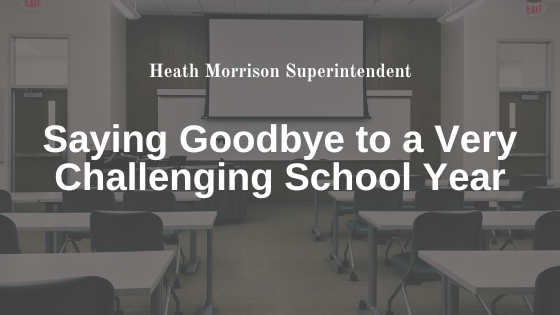A few months ago, I spoke at a national superintendent’s conference. While it is normal for school district leaders to share challenges among themselves as a way to relieve the immense pressures of the job, there was something distinctly different about these conversations. Superintendents with impressive track records of results and longevity were sharing how this academic year had been the most difficult they had ever experienced, and many were leaving, or considering leaving the profession. During the conference it was shared that there were over 1800 superintendent openings across the country, with that number expected to grow over the next several years.
The 2021-2022 school year produced some of the following major challenges across the country:
- The Continued Impact of COVID: As the new year started, infection rates were significantly on the decline, and with vaccinations now available, there was hope that the pandemic may be on the decline. Those hopes were short lived as first Delta, then Omicron, hit school districts hard, causing massive student and employee absences and having communities divided on what school leaders should do in response. The full impact of the “COVID Slide” was recognized as students had lost anywhere from three months to a full year of learning with schools closed or only operating with remote learning. The federal government’s response of ESSER funding was well meaning, but in typical national government action, it was grossly ineffective as some school districts got far too much funding to spend in the allotted time periods and many got almost no funding, despite every district being impacted by the pandemic. Additionally, state legislators passed bills, again with good intentions, that future complicated the work that needed to occur.
- The Political Divide In the Country and Social Media: There is a great deal of anger and frustration across the country and it was on full display at school board meetings this year. Concerns over Critical Race Theory(Or “CRT”), gender identity, responses to COVID, and library books were just a few of the many issues school districts had to address. Various states began to address these perceived concerns with legislation banning certain curriculum and regulating topics teachers could discuss. Some states went so far as to establish hot lines to report teachers suspected of violating community norms and some allowing for legal action. A number of states have implemented, or are considering, a “Parent’s Bill of Rights”, but none to date have included a Parent’s Bill of “Responsibilities”. All of these issues get played out on various social media sites where anonymous community members can make any number of unfounded allegations and accusations that school and district leaders have to respond to as quickly as possible.
- School Violence and Security Concerns: Across the country school districts are reporting an alarming number of social and mental health challenges with students; linked to the challenges and pressures of the pandemic. This has caused a rise of students acting violently with emotional outburst and fights up considerably from the previous year. This year, several national social media platforms challenged students to take any number of concerning actions in school from vandalism, assaulting teachers, and calling in false security threats knowing it would require a response. Horrific school shootings this year, headlined by the deaths of students and staff in Michigan and Texas, were a grim reminder that our schools are targets for violence.
Any one of these challenges would be enormous; all of them together, plus a number of others, combined to stretch school leaders to the point of exhaustion and despair. While national data is emerging that speaks to these challenges impacting half of our nation’s teachers considering leaving the profession in the next several years, similar studies need to focus on the exodus of school and district leaders.

